Interesting are fox shot year around as pest or is there a session? I ask because it mostly winter time here for the furs and I was always told a red fox will not go to ground unless a dog is almost on it in the winterMostly used to flush and retrieve, with some pointing. When we do a drive hunt, line hunt or a Kettle hunt it is usually multiple game in the same seasons. No telling what is going to flush, mostly Hare, Pheasant, Grouse, Fox and occasionally Deer and Hogs. Ducks and Geese by the Creeks. We don't shoot Deer during a drive or kettle hunt (illegal here).
Usually mixed agriculture and forest. No telling what is going to flush out of a Corn or grain field. We pay special attention to hedgerows.
Hard for a hound to catch a Fox until the Fox runs out wind, a dog can outlast a Fox. Dogs have deeper chests more lung capacity, Fox have narrow chests to fit in the burrows better, a skinned Fox reminds me of a narrow chested Whippet, the fur makes them look bigger than they are. But mostly a Fox will run from cover to cover or often to a den. We often have a few earth dogs with us to send down a burrow or into a stack of hay rolls. Where we hunt, a Fox is seldom farther than a quarter of a mile from a burrow, often multiple burrows within a hundred yards.
Very few Jackel, Wolf or Lynx around, a lot Fox. Fox are pretty much the apex predator here, cars. disease and hunters are the only real threat to them. Occasionally a Hawk or Eagle will pick off a pup. Side note, one way I find a Fox burrow is to watch the trees and see which ones the Hawks are sitting in late spring. the Fox pups come out to play about dark or a little earlier, the Hawks know this. If there is no nest around the Hawks are sitting up in that tree for a reason.
Navigation
Install the app
How to install the app on iOS
Follow along with the video below to see how to install our site as a web app on your home screen.
Note: This feature may not be available in some browsers.
More options
You are using an out of date browser. It may not display this or other websites correctly.
You should upgrade or use an alternative browser.
You should upgrade or use an alternative browser.
Pointer breeds hunting fur
- Thread starter Kyboy88
- Start date
El Jason
Well-known member
I would highly question this generalizationI was thinking more like a gsp because I have heard they are a little less high string as the DD
This can and should be a valid concern, but largely depends on how you'll be hunting themI was thinking a gsp could handle the hot weather better
El Jason
Well-known member
With any of the versatile dogs you are bringing out traits bred into them by the training you do with them. You aren't teaching them to do something per se, you are reinforcing the genetic instinct. This may seem semantical, but it's really not.
OK I could be wrong but I was under the impression that even if they were in full on attack mode a gsp was a little more likely to bay bigger game then try to kill it like a DD also hunting season mostly over by the time it gets really hot around here like summers in the low hundreds so I though a Short hiar dog would be betterI would highly question this generalization
This can and should be a valid concern, but largely depends on how you'll be hunting them
Mudder
Active member
- Joined
- Jan 4, 2020
- Messages
- 158
Used to be a year-round season, shoot them when you see them. Now it is closed, March to the middle of August. Echinococcus multilocularis Was a big problem here for over a decade, it was shoot on sight and then treat them like toxic waste. They are now season closed while they are in the denning months. I have no idea whether the season was enacted because the disease was under control or the animal rights groups got it enacted. There has never been any shortage of Fox, they say because the litter size has some magic connection with the available territory, you thin them out and they have bigger litters.Interesting are fox shot year around as pest or is there a session? I ask because it mostly winter time here for the furs and I was always told a red fox will not go to ground unless a dog is almost on it in the winter
Our Red Fox are den lovers, it may be different in other locations. Many of the dens have been used for decades if not centuries. They have their tricks for losing a dog, but mostly they are not very far from a den. On my last lease, I found most of the dens and could ambush hunt. On the lease I have now, half of it is old forest and there are many places for them to den and the ground is hard to track, I mostly pick them off while I'm sitting for Roe Deer (nine month season here for certain age groups). I used my Pointer/gun dog mostly to help find the dens and/or well-used paths. Very rarely does a dog catch a Fox, mostly flush and shoot or ambush shoot to or from a den. We've let twenty dogs loose in a Cornfield and had a Fox run them almost to exhaustion, sprint hide, sprint hide and then repeat. My last dog (gone now) really had a nose for Fox. I usually gave my Fox to a farmer who worked the pelts in exchange for hunting his lease (farm) he kept his hunting rights and never contracted them out. He had a lot of Rabbit, Hare, and Pheasant on his farm. His dog was a wire-haired Feist likely a Fox Terrier mix, death on Fox. My dog was 80 plus pounds, inertia kept him from doing the bob and weave like a Fox can.
Last edited:
Oh OK so when you say your dogs help you find dens or paths how does that work? Also on a side note I head a guy from Australia talk about shooting deer hogs goat's rabbit fox and wild dogs with a pointer trained for something he called a stalking dog said it began in Germany have you heard or seen that
Mudder
Active member
- Joined
- Jan 4, 2020
- Messages
- 158
Usually, find a set of Fox tracks and have the dog trail it, Works two ways, it will eventually lead to a path with multiple tracks they use most days or it will help mark the rounds. What I mean by the rounds, is Fox often check out fruitful Rodent areas on a regular basis, they have their favorite spots. When they den (have pups) they hunt pretty much continuously and often beat a defined path to and from the den (with pups) they are using. My deceased Weimaraner was really good at it, the Plummer I have now has a decent nose, but not on a par with my Weimaraner. That Weimaraner had a deep-seeded hate of Fox, genetics. My Terrier pretty much hates everything.Oh OK so when you say your dogs help you find dens or paths how does that work? Also on a side note I head a guy from Australia talk about shooting deer hogs goat's rabbit fox and wild dogs with a pointer trained for something he called a stalking dog said it began in Germany have you heard or seen that
I don't know what they call a stalking dog, maybe a scent tracker? I've used hunting/herding dogs on Yotes in the states. Usually, as part of a pack in case they get into trouble. I had a Black Mouth Cure that would turn a Yote and drive it back to me. She even did it with a Fox once and once with a Cougar. She was way faster than any other dog I had, the others brought up the rear and helped if it turned into a fight. Guys now are using bait dogs to hunt Yotes, the dog gets the Yote to follow it back to the hunter. I guess there are many tactics used in different places.
Here it is often flush and shoot, some work with pointers, Hare and Pheasant often try to hide and you have to be right on top of them before they'll flush. I've almost stepped on a Hare before. Fox will sneak and hide, circle and often use cunning. Even Roe Deer sometimes hide rather than flee.
runningmt
Well-known member
- Joined
- Apr 25, 2018
- Messages
- 717
He didn’t train them to do so, but he didn’t admonish the behavior either. I think honestly there were equal parts of disgust and pleasure.in
Just from instruct or did your friend do anything to bring it out
Mudder
Active member
- Joined
- Jan 4, 2020
- Messages
- 158
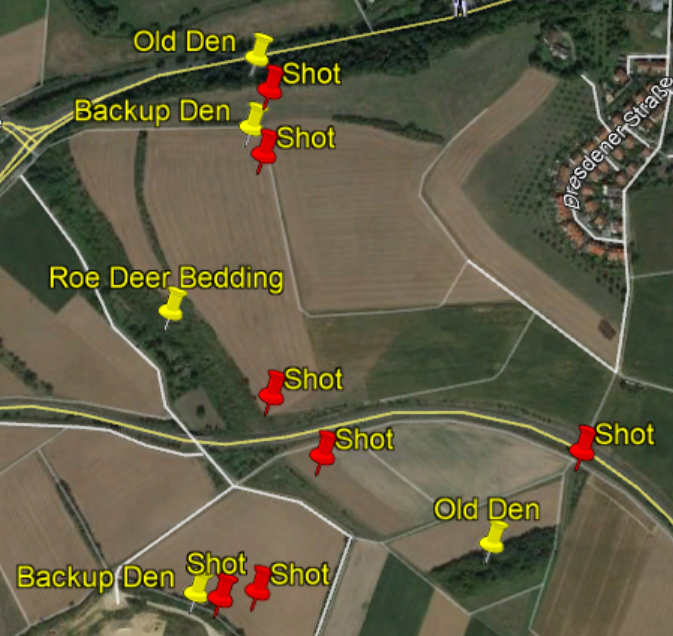
You can see why I say if you find the den you find Fox, this is just a thumbnail of the lease. I avoided the Roe Deer bedding area I wanted them to be predictable and not spoke them off, likely more dens in there. This area is game-rich, a lot of Pheasant, Hare and Rodents. They use those old Dens year after year, even the backups are often multiyear. You pop one Fox and another moves in.
If you are interested I can post some other thumbnails of parts of the lease. May help you make a plan for your area.
That isn't actually all of the Dens, there are a couple of more abandoned that may sometime be reused.
Last edited:
El Jason
Well-known member
Mine doesn't either, but the stud dog for Finn's litter has a super tight coat, nearly as short as a GSP. That breeder is in Texas. There are a number of guys in the south who use Drahts.I'd hazard a guess that the average GSP can handle more heat than the average Draht. My draht does not do well when temps hit 60 degrees or higher.
I know black mouth curs the best coon dog I had growing up was part cur and black and tan hound. But that is strange them turning game back I always thought they were catch or tree dogs. Do you have any idea what made here that way? Which the bait dog thing seems to be more out west and done during the summer denning season when they are more aggressive.Usually, find a set of Fox tracks and have the dog trail it, Works two ways, it will eventually lead to a path with multiple tracks they use most days or it will help mark the rounds. What I mean by the rounds, is Fox often check out fruitful Rodent areas on a regular basis, they have their favorite spots. When they den (have pups) they hunt pretty much continuously and often beat a defined path to and from the den (with pups) they are using. My deceased Weimaraner was really good at it, the Plummer I have now has a decent nose, but not on a par with my Weimaraner. That Weimaraner had a deep-seeded hate of Fox, genetics. My Terrier pretty much hates everything.
I don't know what they call a stalking dog, maybe a scent tracker? I've used hunting/herding dogs on Yotes in the states. Usually, as part of a pack in case they get into trouble. I had a Black Mouth Cure that would turn a Yote and drive it back to me. She even did it with a Fox once and once with a Cougar. She was way faster than any other dog I had, the others brought up the rear and helped if it turned into a fight. Guys now are using bait dogs to hunt Yotes, the dog gets the Yote to follow it back to the hunter. I guess there are many tactics used in different places.
Here it is often flush and shoot, some work with pointers, Hare and Pheasant often try to hide and you have to be right on top of them before they'll flush. I've almost stepped on a Hare before. Fox will sneak and hide, circle and often use cunning. Even Roe Deer sometimes hide rather than flee.
Also when you say hunting \herding dogs do you mean the curs that were breed to do both or a mix between hunting and herding dogs because seems like some accounts of the old wolf and coyote hunters like a hound x stock dog to make a smart fast hunter also seems cur x hounds are becoming a popular mix seems when it done right you get the brain's speed and handling of a cur with the tracking and rang of a hound. Might be a better fit for our area
Mudder
Active member
- Joined
- Jan 4, 2020
- Messages
- 158
Just something I noticed when she was a pup, she had a strong herding instinct, I taught her early not to run far in a straight line, that evolved into loops, she'd run, check-in and run another loop. I saw a documentary about Sheepherders using a whistle, tone, duration etc to guide their dogs. I tried it with her and she picked it up quickly. She was definitely one of a kind, smart, eager to please, a team player and had a strong prey drive. She'd also smell Rattlers and warn me.I know black mouth curs the best coon dog I had growing up was part cur and black and tan hound. But that is strange them turning game back I always thought they were catch or tree dogs. Do you have any idea what made here that way? Which the bait dog thing seems to be more out west and done during the summer denning season when they are more aggressive.
Also when you say hunting \herding dogs do you mean the curs that were breed to do both or a mix between hunting and herding dogs because seems like some accounts of the old wolf and coyote hunters like a hound x stock dog to make a smart fast hunter also seems cur x hounds are becoming a popular mix seems when it done right you get the brain's speed and handling of a cur with the tracking and rang of a hound. Might be a better fit for our area
She had a smooth tight coat, much like a Boxer with no undercoat, she worked well in the hot Southwest climate. She was lighter boned and more built for speed than your typical Black Mouthed Cure. One of the bigger mistakes I ever made was getting her spayed before I really knew what I had. She was a sight hunter mostly. she had a nose but nowhere near what my Weimaraner had.
Good to hear JLS. Bane has a heavy coat and he's 82 pounds. New guy has that same tight GSP type coat and is going to be 60-65 pounds. He may get more work on the warmer days if he can handle it better.Mine doesn't either, but the stud dog for Finn's litter has a super tight coat, nearly as short as a GSP. That breeder is in Texas. There are a number of guys in the south who use Drahts.
Speaking of coats and a breed related to DDs, the pudelpointer. When I was tallking with breeders about getting a pup, everyone stated that they could not or would not guarantee the type of coat they would have. I asked why and they all stated that as long as it was within breed standards, they were more interested in how the worked vs how they looked. Hanks mother could almost be mistaken for a lab or GSP and the sire nearly for a WPG.
Dam with litter:
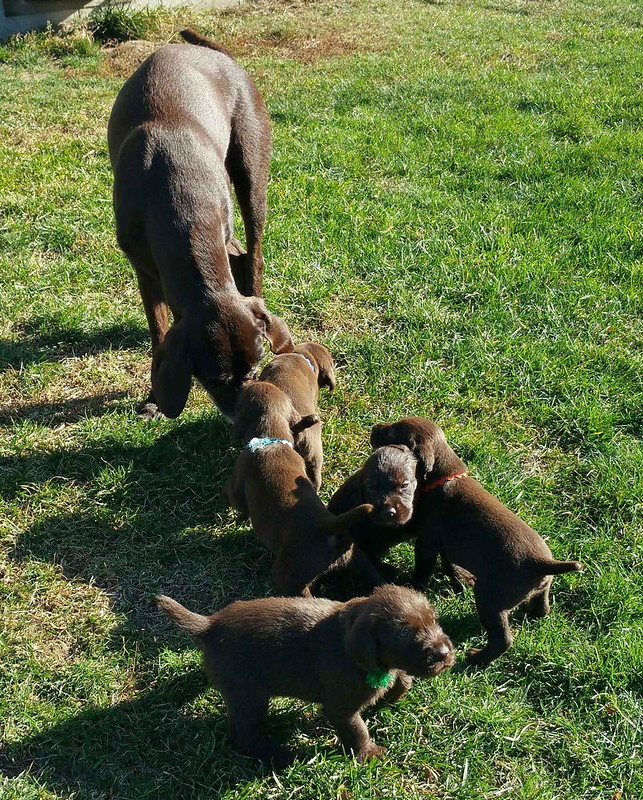 Untitled by Tyler Staggs, on Flickr
Untitled by Tyler Staggs, on Flickr
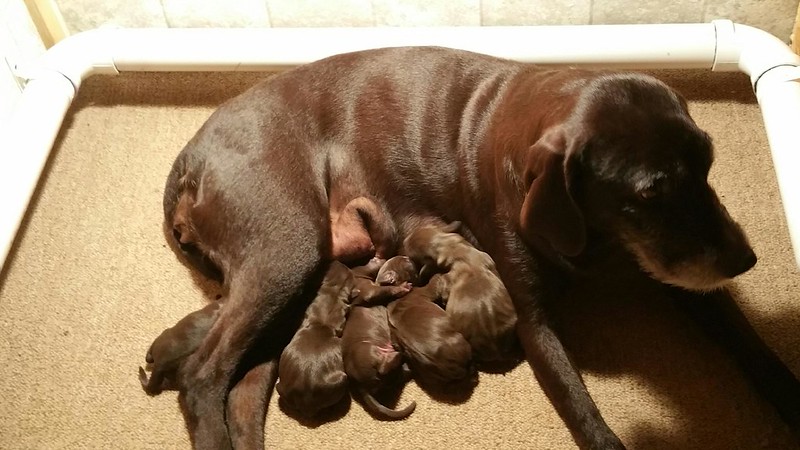 Untitled by Tyler Staggs, on Flickr
Untitled by Tyler Staggs, on Flickr
Sire:
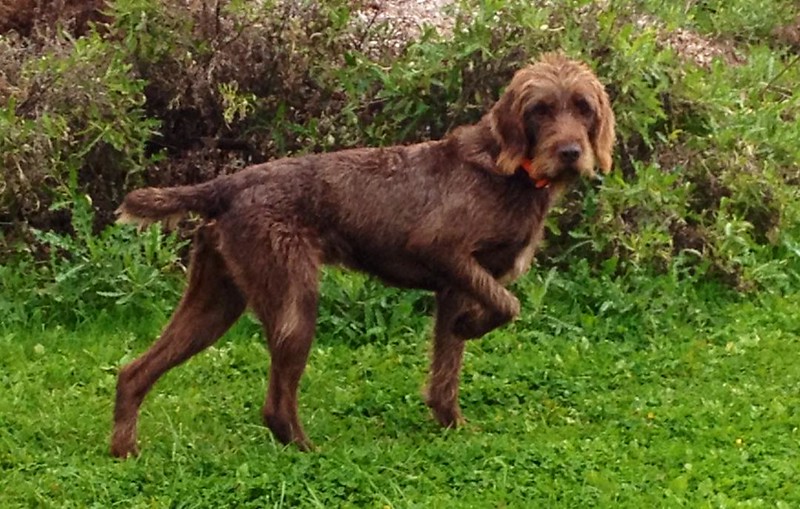 Untitled by Tyler Staggs, on Flickr
Untitled by Tyler Staggs, on Flickr
Dam with litter:
 Untitled by Tyler Staggs, on Flickr
Untitled by Tyler Staggs, on Flickr Untitled by Tyler Staggs, on Flickr
Untitled by Tyler Staggs, on FlickrSire:
 Untitled by Tyler Staggs, on Flickr
Untitled by Tyler Staggs, on FlickrGAdrahthaar
Member
- Joined
- Jul 18, 2017
- Messages
- 62
I would suggest getting in touch with someone who is involved in the JGHV testing system. This is the testing system Drahthaars, Langhaars, and Kurzhaars (among others) go through. Just because a dog is used for fur does not mean they won't mind or stop the pursuit. Quite the contrary. In addition, a properly force fetched dog will retrieve anything you send it after without destroying it. German dogs are marked "loud" on game during testing.
Regardless of what breed you choose, I would strongly recommend you spend some time with that particular breed, and more importantly with the dog(s) used for the breeding.
remember what I said about prey drive vs. cooperation. My dog would gladly kill any cat I released him on, but he will remain in a down stay in the yard while the neighbor's fatty strolls across the street giving him the finger.
I think this sums up the JGHV system's benefits as they apply to OPs needs very well. My two drahthaars are just as described above. If I let them they will fight anything and regularly kill coons, but will sit on the dock and watch geese honk away because I told them.
If we are pheasant hunting, they will chase the first rabbit and stop for the day if I say "not yours" or hunt both all day if I shoot it. They regularly fetch ducks, hunt squirrels and blood track wounded deer in the same day.
Mine hunt everything except healthy pigs, because I'm too invested in them $ and emotionally.
What part of the country are you in OP?
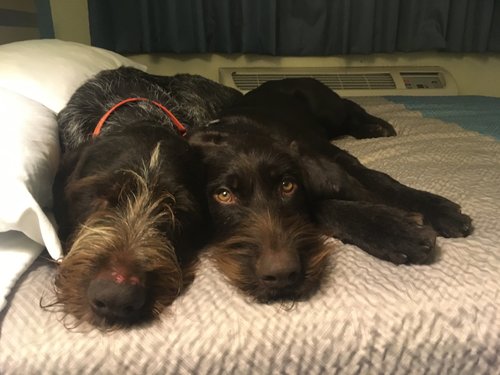
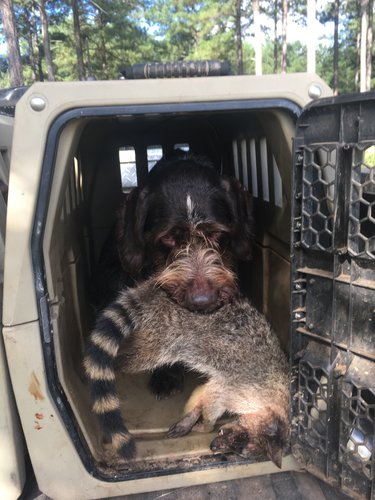
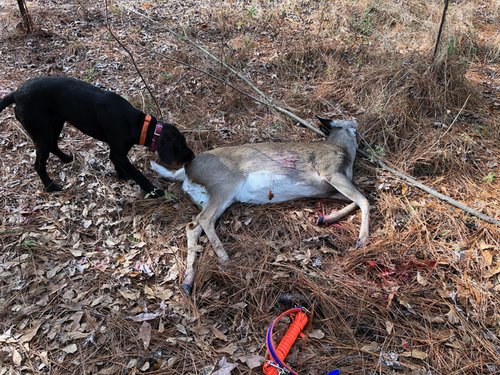
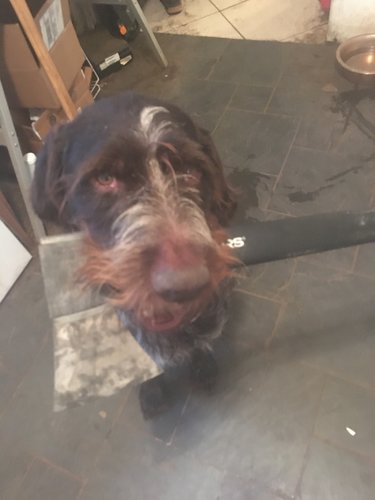
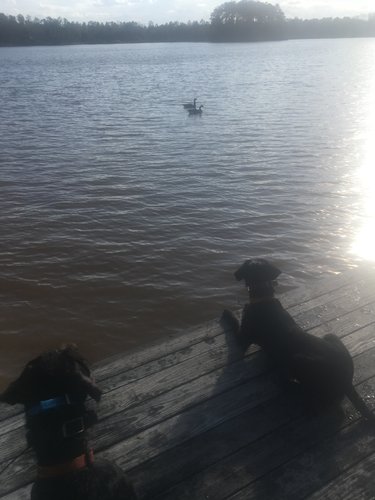





Th
Also could you believe the stories I heard about two or three of ones like yours could run down and catch a fox or coyote?
That cool man I am from south east ky in a town called Manchester. We don't have ducks and geese and just pocket of upland birds and turkeys with small game and predators pulse blood tracking and shed hunting. I would be interest if the group you talked about was in ky.I think this sums up the JGHV system's benefits as they apply to OPs needs very well. My two drahthaars are just as described above. If I let them they will fight anything and regularly kill coons, but will sit on the dock and watch geese honk away because I told them.
If we are pheasant hunting, they will chase the first rabbit and stop for the day if I say "not yours" or hunt both all day if I shoot it. They regularly fetch ducks, hunt squirrels and blood track wounded deer in the same day.
Mine hunt everything except healthy pigs, because I'm too invested in them $ and emotionally.
What part of the country are you in OP?View attachment 135397
View attachment 135398
View attachment 135399
View attachment 135400
View attachment 135401View attachment 135397View attachment 135398View attachment 135399View attachment 135400View attachment 135401
Also could you believe the stories I heard about two or three of ones like yours could run down and catch a fox or coyote?
GAdrahthaar
Member
- Joined
- Jul 18, 2017
- Messages
- 62
I have let mine chase a few foxes that gave them the slip, and somehow haven't had a coyote encounter yet. I feel confident that either dog could dispatch a fox or yote (it wouldn't be free). I definitely believe that a drahthaar can catch a fox or coyote, I just don't know if the odds of success are high enough to consider it an effective hunting technique. Not sure if that answers your question, but my predator hunting knowledge is limited.Th
That cool man I am from south east ky in a town called Manchester. We don't have ducks and geese and just pocket of upland birds and turkeys with small game and predators pulse blood tracking and shed hunting. I would be interest if the group you talked about was in ky.
Also could you believe the stories I heard about two or three of ones like yours could run down and catch a fox or coyote?
I don't know the groups in your area but you may want to call breeders https://www.vdd-gna.org/breeders/
or, if you want to breed shop some try and find a NAVHDA training group. Those are probably canceled right now with the virus but are a great chance to see a variety of breeds in field training scenarios.
Mudder
Active member
- Joined
- Jan 4, 2020
- Messages
- 158
IMO it is hard to get it all in one package, either the dog is amazingly fast (often sight hunters) or they have other talents going for them, pointing, nose, retrieval etc.I have let mine chase a few foxes that gave them the slip, and somehow haven't had a coyote encounter yet. I feel confident that either dog could dispatch a fox or yote (it wouldn't be free). I definitely believe that a drahthaar can catch a fox or coyote, I just don't know if the odds of success are high enough to consider it an effective hunting technique. Not sure if that answers your question, but my predator hunting knowledge is limited.
I don't know the groups in your area but you may want to call breeders https://www.vdd-gna.org/breeders/
or, if you want to breed shop some try and find a NAVHDA training group. Those are probably canceled right now with the virus but are a great chance to see a variety of breeds in field training scenarios.
My daughter had a GSP mix that could flat fly,
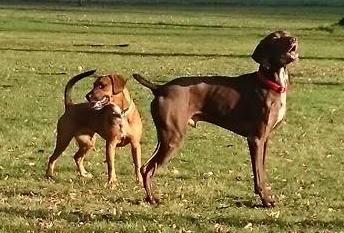
IMO slightly slower than a Greyhound (45 MPH), way quicker than a Fox 35 MPH or Yote 40 MPH. The Ibizan Hound I had was also really quick. The dog with him is about the same size as a Beagle, just for reference.
But Yotes besides being quick are endurance runners, you need a dog in really good shape to hang with one. Fox are shifty, they will use any available cover to lose a dog, you need a dog with a good nose to follow one and find it again after it has given the chase dog the slip. Fox are all about escape, Yotes will fight especially if there are more than one.
One thing to think on is there is some variation in a breed, Some dogs in a breed are just built faster than the average. Even variations in a litter. Also sometimes breeders admix, introduce another breed to strengthen certain traits.
Last edited:
Similar threads
- Replies
- 23
- Views
- 8K
- Replies
- 5
- Views
- 4K




